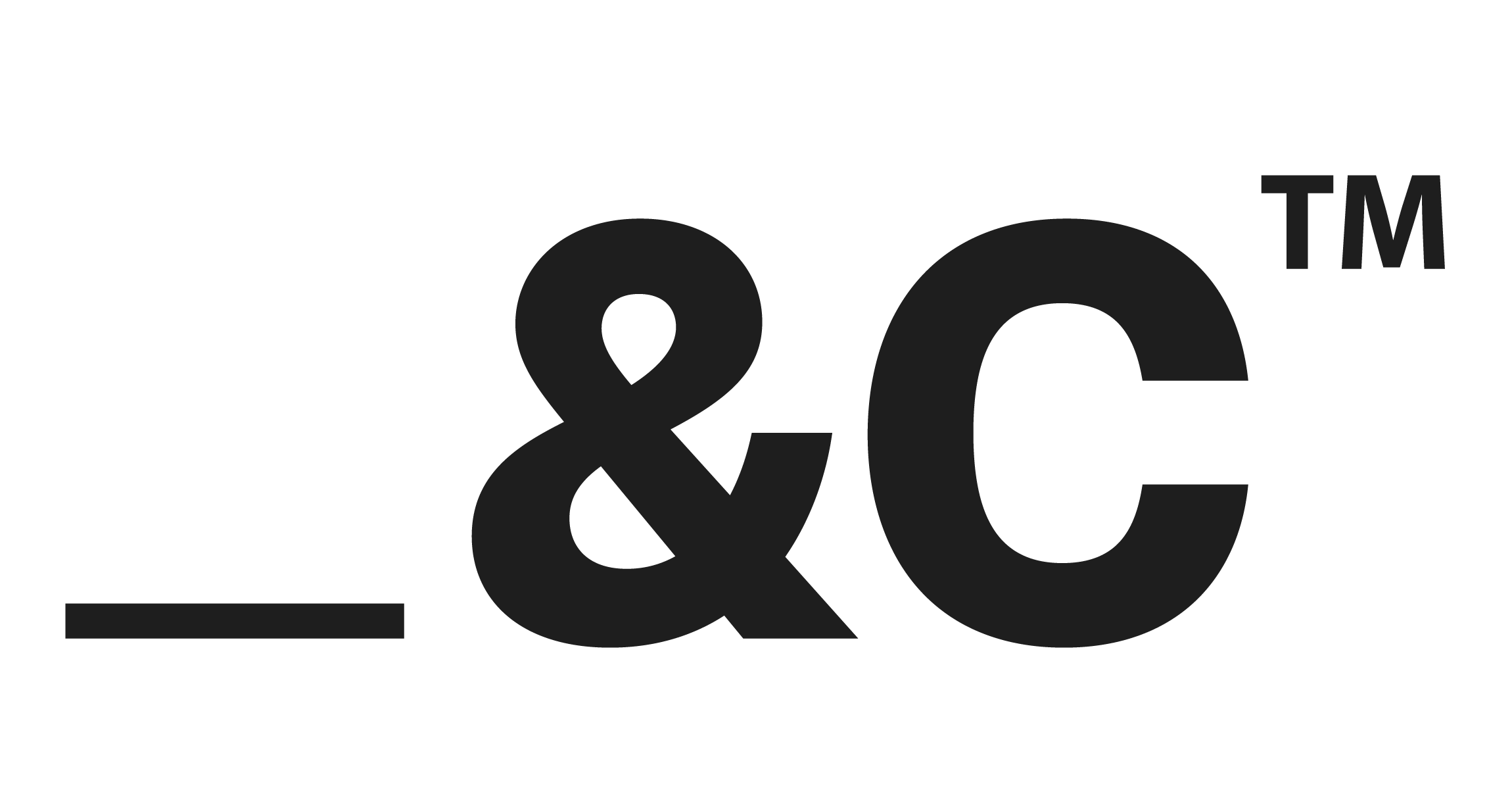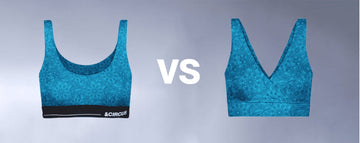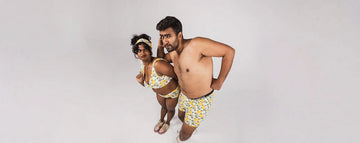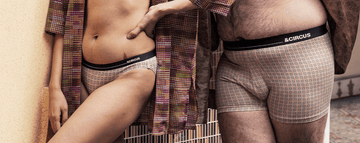Quick Listen:
Picture yourself wandering into a store where the displays flow without the rigid divide of men's and women's sections just inviting stacks of plush, adaptable fabrics ready for anyone to try. No sidelong looks or imposed labels; simply undergarments that resonate with your sense of self. This vision is no longer on the horizon it's the subtle yet powerful shift redefining closets everywhere, merging ease with a profound nod to personal identity.
The Rise of Genderless Fashion in Underwear Shopping: Embracing Inclusivity in Sustainable Loungewear
As shoppers increasingly favor choices that promote inclusion and environmental responsibility, gender-neutral fashion is emerging as a powerhouse in the underwear sector. This evolution is altering how people approach purchases and reconfiguring the broader industry terrain.
The Shift Towards Genderless Fashion in Underwear
Fashion has long echoed societal transformations, yet the intimate apparel realm is now at the forefront of profound change. Traditional divisions in undergarments are fading, replaced by designs that emphasize eco-friendliness and broad accessibility. This aligns seamlessly with cultural progress, where individual authenticity overrides conventional standards.
AndCircus exemplifies this movement, staking its claim with materials kind to the planet and forms that accommodate every physique. It champions underwear free from gender constraints. Central to this shift is the surge in genderless fashion trends, prompting stores to overhaul inventory and promotional tactics. Fundamentally, it's about empowerment enabling selections that mirror personal narratives over external dictates. This inclusive approach is revolutionizing underwear shopping, dismantling old gender barriers, and opening doors for eco-driven labels like AndCircus to flourish.
Data supports this momentum. The global market for men's underwear and women's lingerie is set to rise from USD 150 billion in 2023 to USD 265 billion by 2033, achieving a CAGR of 6.9% from 2025 to 2033. Such expansion underscores a craving for items fusing comfort and flair, propelled by younger cohorts eager for distinctive, upscale varieties. In North America, the lingerie segment anticipates growth from USD 14.54 billion in 2025 to USD 17.94 billion by 2030, at a CAGR of 4.29%. Advances in tech, including AI-assisted tailoring, are accelerating this, rendering personal wear more approachable and bespoke.
Emerging Trends in Genderless Underwear Fashion
Zoom out, and gender-neutral aesthetics are clearly advancing, eschewing tags for garments that highlight practicality and adaptability. These are core items for everyday use, featuring airy textiles and simple silhouettes that resonate universally. It's a stark departure from yesteryear's compartmentalized setups, where options seemed dictated.
Millennials and Gen Z are spearheading this, adopting fluid expressions within a sweeping societal tide. They browse social media, encountering trendsetters in unisex ensembles drawn from international vibes like Japan's jendresu movement, which blossomed in Harajuku around the mid-2010s. Participants, often slender with vibrant hair, cosmetics, bold outfits, and charming add-ons, defy conventions, pulling from K-pop, visual kei, and kabuki's onnagata traditions. While not explicitly linked to intimates, this spirit permeates, fostering clothing that transcends gender sans identity debates.
Sustainability integrates seamlessly. Neutral collections frequently employ green resources, matching consumers insistent on moral manufacturing. The sector's drive for upscale enhancements envision superior, gentle-on-skin cloths connects to wellness surges, per latest reviews. Online retail has magnified this, via tech-savvy methods delivering custom suggestions that simplify eco picks. Shifts in population, such as city growth in developing areas, amplify needs, elevating undergarments to emblems of principles.
Companies counter with cutting-edge cloths, like those that draw away sweat or bond without seams, attracting varied users. This represents a profound attitudinal pivot, uniting solace and ethics in daily essentials. Moreover, the market, pegged at USD 45.7 billion in 2024, eyes USD 70.2 billion by 2033 with a CAGR of 5.2% from 2026 onward, fueled by hygiene focus, tech fabrics, and sustainable shifts, especially among youth.
Real-World Examples, Applications, and Case Studies
AndCircus stands out vividly. Its lineup bypasses gender markers, prioritizing expansive measurements and responsible procurement fitting all. Spanning natural fibers to flexible patterns, it answers the demand for planet-respecting, adjustable intimates. Patrons extol the comfort, illustrating how green inclusion cultivates devotion.
Peers are entering the arena. Legacy labels trial neutral assortments, as newcomers test limits in eco-undergarments. Draw from couture highlights: Dior's leopard skirt-shorts or Valentino's refined suiting in Spring/Summer 2024 signaled liquidity, though street-level uptake trails. In Japan, shows like Hugtto! PreCure spotlight personas advocating boundless views, with dialogues like "Even boys can become princesses!" resonating widespread embrace.
Expansion metrics affirm the appetite. The worldwide undergarment and lingerie arena, targeting that 6.8% CAGR through 2033, reveals buyer zeal for adaptable, verdant alternatives. Research indicates climbing digital transactions, where seekers favor firms emphasizing health and aesthetics minus divisions. This segment swells, luring those weary of classic restrictions. Further, North America's market, moderately consolidated with giants like Victoria's Secret and Hanesbrands, witnesses innovations such as DOUBL's AI-fitted bra from 2024, underscoring personalization's role.
Key Challenges, Limitations, and Risks
Obstacles endure, though. Guiding buyers on neutral advantages proves arduous in a field rooted in heritage. Plenty revert to known groupings, requiring prompts to venture into unified zones.
Dimensions pose a thorny issue. Neutral styling grapples with fit dilemmas, as creators labor to suit myriad forms without exclusion. Catwalk breakthroughs from Dior and Valentino underscore flow, yet selling these lines is complex. Nailing ratios for varied shapes heights, contours, structures calls for accuracy, lest refunds escalate, denting earnings in online surges.
Eco-aspects complicate matters. Procuring virtuous components while preserving affordability is challenging. Firms navigate green cloths alongside widespread draw, contending with logistics hurdles and elevated expenses. In North America's intimates domain, where tools like 3D imaging vow individualized adjustments, rollout differs, sidelining certain buyers.
Such perils misfits, awareness voids, fabrication intricacies might hinder pace if ignored. Yet, they double as innovation catalysts, morphing drawbacks into assets. Competition from athleisure or shapewear adds pressure, as versatility lures, while raw cost swings affect pricing in sensitive zones.
Opportunities, Efficiencies, and Business Impacts
Conversely, adopting neutral and sustainable paths unveils prospects. Outfits like AndCircus nurture profound allegiance in mindful circles, who commit to aligned emblems. This openness secures ongoing patronage, evolving casual shoppers into champions.
Growth invites exploration. Abandoning gender splits allows access to overlooked niches consider shifting personas or simplicity seekers. The foreseen climb to USD 265 billion by 2033 heralds space for many, notably in areas with climbing earnings and city-dwelling young adults.
Productivity arises via condensed ranges: reduced variants, yet more multipurpose ones that minimize excess and attract extensively. Virtual aids bolster this, with AI curating advice and curbing surplus output. Enterprises note effects in wider scope and robust identity, as eco-friendliness turns pivotal in wellness-driven currents. Opportunities abound in expressive innovations, recycled textiles, and emerging territories like Asia-Pacific, where urbanization spurs middle-class fashion outlays.
The Future of Genderless Fashion in the Underwear Market
Authorities foresee persistence in this direction. A designer remark, "When I design things, gender doesn't come into it," encapsulates the impetus for evolution. As outlets boost liquidity from anime in Japan to worldwide stages the field will probably advance, additional labels embedding openness intrinsically.
Forward, anticipate heightened tech fusion for adjustments and verdanter breakthroughs alongside that 4.29% North American CAGR. For ventures considering immersion, prioritize awareness, adaptable dimensions, and principled origins. Collaborate with tastemakers, harness digital sales, and heed audiences these tactics forge triumph.
Ultimately, neutral undergarments transcend trends; they mirror a society welcoming variety. While buyers load up on items suiting existences over tags, pioneers like AndCircus forge ahead, demonstrating that ease and ethics harmonize splendidly.
Frequently Asked Questions
How is technology supporting the growth of gender-neutral underwear?
Advancements like AI-assisted tailoring and 3D imaging are making it easier to create customized, well-fitting gender-neutral underwear. These technologies enhance online shopping experiences and help address fit challenges in a segment that caters to diverse body shapes. Tech integration also streamlines eco-conscious production and reduces returns.
What is genderless underwear fashion, and why is it gaining popularity?
Genderless underwear fashion eliminates traditional gender divisions, offering inclusive, comfortable, and sustainable designs that fit all body types. Its gaining popularity among millennials and Gen Z who value authenticity, body positivity, and products that align with their personal identity. Brands like AndCircus are leading this movement with eco-friendly, size-inclusive collections.
What are the key challenges in adopting genderless fashion in the underwear market?
Key challenges include educating consumers, overcoming size and fit complexities, and maintaining affordability with sustainable materials. Many shoppers still default to traditional gender categories, and brands must navigate the cost of ethical production while scaling inclusivity. Despite these hurdles, demand continues to rise due to shifting cultural attitudes and consumer values.
Disclaimer: The above helpful resources content contains personal opinions and experiences. The information provided is for general knowledge and does not constitute professional advice.
You may also be interested in: Underwear for Gender-Neutral and Non-Binary Individuals: Inclusive
Uncomfortable underwear shouldn't steal your confidence. At Andcircus, we craft ultra-soft, sustainable Lenzing Modal Micro innerwear for every body, XS to 5XL. From briefs to bras, our custom packs fit you perfectly. Shop risk-free with our 100% satisfaction guarantee and embrace comfort that includes everyone. #LoveEveryBody. Shop Now!







































